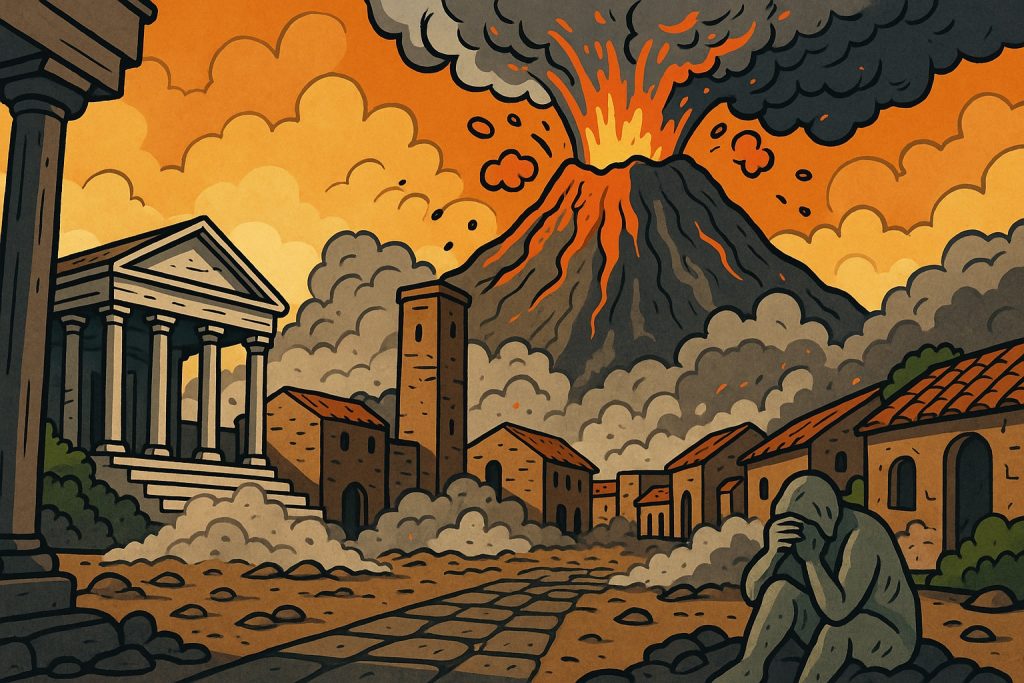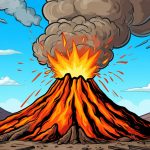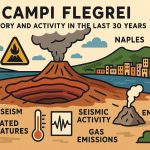Pompeii was a prosperous Roman city located near the Bay of Naples, in southern Italy. By the first century AD, it had become a vibrant cultural and commercial hub, with bustling markets, grand villas, bathhouses, temples, and an amphitheater. However, this thriving city was built in the shadow of Mount Vesuvius, a volcano that had been dormant for centuries — so long, in fact, that most residents did not know it was a volcano at all.
On August 24, 79 AD, everything changed. That day, Pompeii experienced one of the most catastrophic natural disasters in ancient history: the eruption of Mount Vesuvius.
The Eruption Unleashed
The eruption began suddenly, with a towering column of volcanic ash and pumice shooting miles into the sky. Ash began falling on Pompeii, covering the city like snow. Many people fled, but thousands remained, unsure of the danger. Buildings began to collapse under the weight of accumulating debris.
Then came the most lethal phase: pyroclastic flows — fast-moving surges of superheated gas, ash, and rock — rushed down the volcano’s slopes and engulfed the city. These flows killed almost instantly, preserving people in the exact positions they were in when they died. Within just 24 hours, Pompeii was buried under 4 to 6 meters of volcanic material.
The Forgotten City Rediscovered
Pompeii remained lost for over 1,500 years, buried and largely forgotten until excavations began in the 18th century. What archaeologists found was astonishing: an almost perfectly preserved snapshot of Roman life. Streets, homes, paintings, tools, and even graffiti remained intact, protected by the layers of ash.
One of the most iconic discoveries were the body casts of victims — created by filling voids in the ash layer with plaster to capture the shape of the bodies that had decomposed. These haunting figures gave Pompeii a reputation as a “city frozen in time.”
Lessons from the Ashes
Pompeii provides a rare and vivid glimpse into daily life in ancient Rome — from cooking pots to murals, from wealthy villas to humble workshops. It has become a priceless resource for historians, archaeologists, and tourists alike.
Beyond its historical value, Pompeii also serves as a powerful reminder of nature’s unpredictability and the dangers of living near a volcano. Today, over 3 million people live near Mount Vesuvius, which is still considered an active and potentially dangerous volcano.
Glossary
- Mount Vesuvius – A volcano in Italy that erupted in 79 AD and destroyed the cities of Pompeii and Herculaneum.
- Pyroclastic flow – A deadly, fast-moving mix of hot gas, ash, and volcanic material.
- Pumice – A type of volcanic rock formed when gas-rich lava cools quickly.
- Body casts – Plaster molds of people who died during the eruption, created by filling ash cavities left by decomposed bodies.


